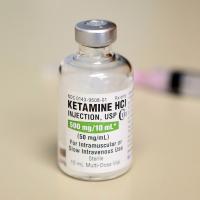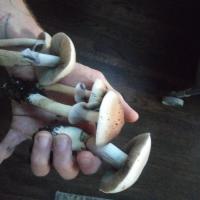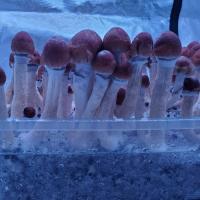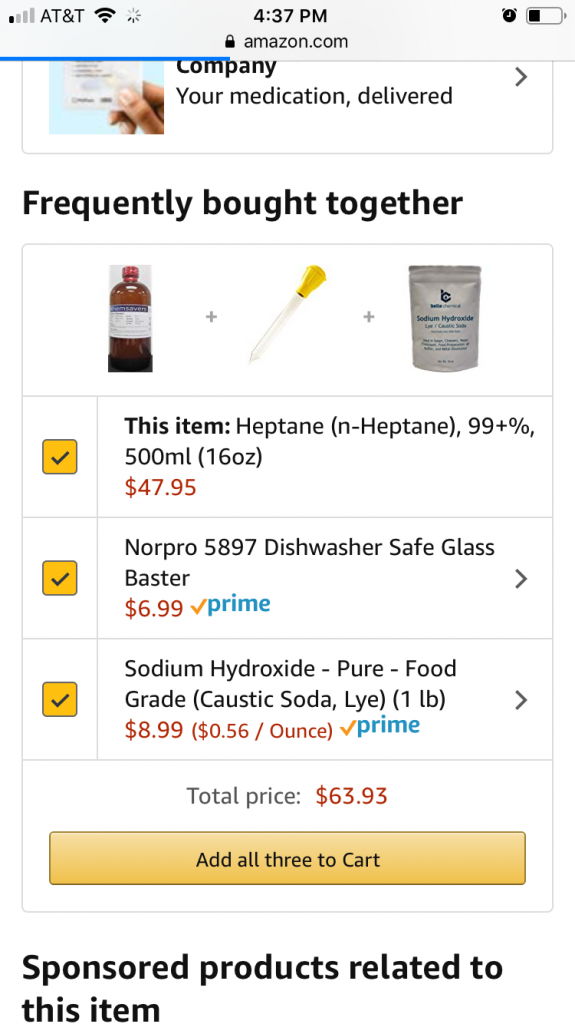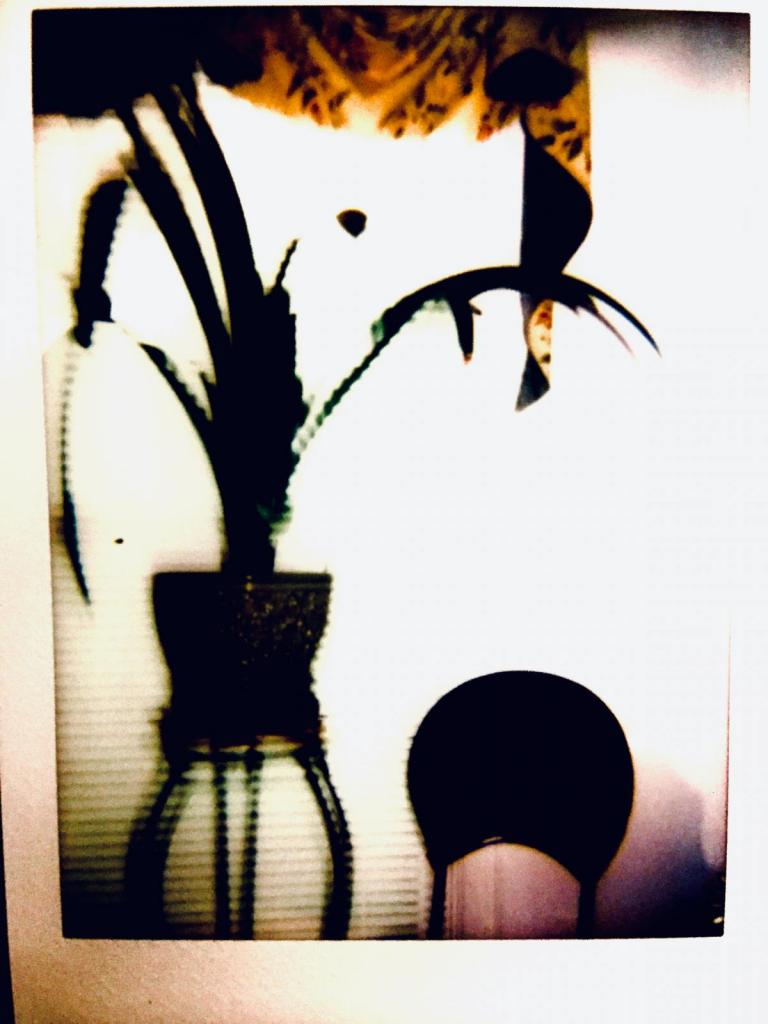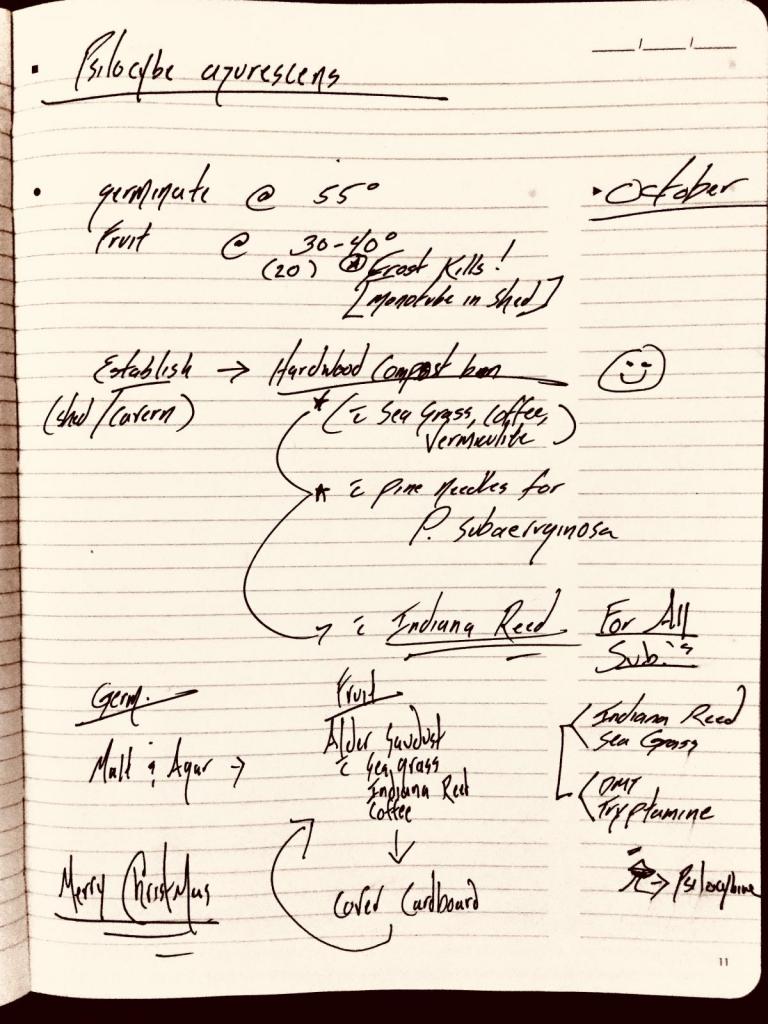Good day my friends. I was running low on heptane and typed it into amazon to see what they had to offer. I was so very pleased to see what people we frequently buying together.
vive la revolución
P... View MoreGood day my friends. I was running low on heptane and typed it into amazon to see what they had to offer. I was so very pleased to see what people we frequently buying together.
vive la revolución
Peace & Love to you all !
I have been going through old papers and found a ton of cool stuff. I know I forgot chem., physics, and pretty much everything else but I freaking never considered genetics. This is long but interesti... View MoreI have been going through old papers and found a ton of cool stuff. I know I forgot chem., physics, and pretty much everything else but I freaking never considered genetics. This is long but interesting (of the net but inspirational to those considering new strains:A hybrid would result from the mating of a monokaryon of one strain with a monokaryon of another strain. This paired Dikaryon would be a hybrid between the two strains. The true success of the hybrid would be if it produced fruits that had spores. Only at this stage would the true hybrid STRAIN be accomplished. No genetic information is exchanged between the two strains until their seperate haploid nuclei have fused and then undergone meiosis. Recombination would then occur between the two seperate strains forming a third strain. It's offspring(spores) would be new combinations of the two donor strains. Hybrids can also be formed by Anastomosis between two dikaryons of different Strains, but it will happen at Far less frequency then mating monokaryons. Anastomosis occurs at a higher frequency between substrains of an individual strain. I.E. between different spore matings resulting from a single syringe. When you multispore inoculate a jar of substrate, this is Happening with a high degreee of frequency. A dominant mating will fuse with other matings, incorporating them into it's mycelial network. It can even rewire a false mating into a good mating. It can overcome an incompatible mating, by replacing one of the nuclei within another strand with one of it's own. A Fertile dikaryon A1B1 A2B2 can run into an infertile A1B2 A2B2 and replace the A1B2 nuclei with a A1B1 nuclei. Creating a fertile A1B1 A2B2 dikaryon that joins the colony. Subsequent fusion could replace the A2B2 nuclei with it's own A2B2 nuclei, which would completely rewire the hyphal strand to it's exact genetic makeup. Or it could leave it partially rewired. This process can be seen on a Nutrient agar plate. Not all substrains within a strain will fuse, some are completely incompatible. There will be a zone of zero growth between them on the petriplate. They just will not fuse. In essence hybrids can be formed between substrains of a single strain or between different strains of the same species. This is the theory, this has been scientifically demonstrated on other species of Basidiomycetes that have been studied!!! I know of know studies that have been done on CUBENSIS, relating to this information. But it must exist. Because it has been Clearly stated in several texts, that Psilocybe cubensis is heterothallic and tetrapolar. And all the above information relates to that type of breeding system in the Basidiomycetes. You ask why this is not being done, because not much MONEY goes into this type of research in the legitamite world. Anastomosis has been studied extensively in the edible mushroom world. Agaricus bisporus is homothallic and two spored, not four. Each and every spore it produces already contains both haploid nuclei to make a dikaryon. But fusion(Anastamosis) between these dikaryons produces more productive Dikaryons!!! The majority of High yielding bisporous are a result of HYBRIDIZATION within a STRAIN or between Strains of this species. So if it occurs between DIKARYONS of this species,it has been viewed occuring between monokaryons of other species, WHY WOULD anyone Doubt that it can occur within the Species Psilocybe cubensis. The major factor to overcome with mating monokaryons is the proximity with which they germinate. Spores tend to clump. So simply placing spores of two different strains in a single syringe, will not overcome the clumping of spores of like strains, and hence their close proximity to each other upon germination. Probably still occurs, when injected into a substrate, and some of the resulting fruitbodies might actually be hybrids, between Strains, and the resulting offspring (spores) from that mushroom will be different looking then both the mushroom it came from, and all of the mushrooms from both the Donor strains. Much easier to DILUTE spores from each strain seperately, plate them, isolate slower growing monokaryons, and try mating as many of these from each strain as possible, with as many as possible from the other strain. All matings that fruit, are hybrids!!! If they produce spores, you now have a new STRAIN. Simply cloning the original matings that fruited, will be a Hybrid as well, but not a true hybrid, becasue their has been NO Recombination between the two strains, NO MIXING OF GENES. There has simply been a successful coexistence of two haploid nuclei, one from each Strain, acting independently, but together to create fruits!!! The real genetic swap occurs during Karyogomay and the subsequent meiosis. *as a note, if you read it’s not possible than whoever wrote it is incorrect.
This crazy fucker tried to eat me last night!
Dear friends, such a beautiful day outside photographing simultaneous contrast on crabapple trees and got struck with the awareness of what it remained me of. So, I present to you this picture from a ... View MoreDear friends, such a beautiful day outside photographing simultaneous contrast on crabapple trees and got struck with the awareness of what it remained me of. So, I present to you this picture from a lab book for discussion. Please give your insights and corrections. I can vouch for it’s success but not it’s soundness.
Love & Peace
page=1&profile_user_id=8808&year=&month=
View More













